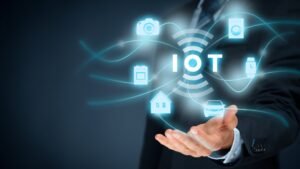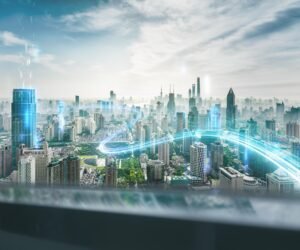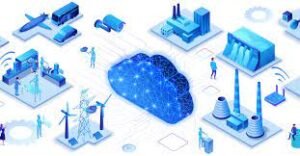Sustainable development through IoT
IoT fosters long-term innovation and revenue, whether firms utilize it to reduce food waste, preserve water, or improve energy efficiency. Sustainable development through IoT.

In recent years, organizations and political authorities have increasingly acknowledged the importance of enterprises in accomplishing environmental, social, and governance (ESG) goals that benefit all stakeholders. ESG criteria hold firms accountable to a set of standards that investors may use to evaluate risk exposure. Organizations in a variety of sectors may use IoT to monitor and mitigate the hazards that their goods and operations pose.
Some Examples
Although population growth has slowed or even reversed in many affluent countries, the United Nations predicts that the world population will reach 10 billion by the end of the century. Food is the most basic requirement for human survival. With an increased emphasis on environmental sustainability, companies must adopt new technology to supply food demand in a sustainable manner. One approach is smart agriculture, which includes precision farming. Smart farming based on IoT comprises both low-cost sensor-based systems that monitor light, temperature, and soil moisture, as well as smart ‘actuators’ that can take real-time action based on field conditions, such as autonomous water and fertilizer supply.

With smart agriculture, farmers can already grow higher quality crops and produce more. Smart agriculture leads to more stable food prices in some of the poorest regions and makes farming more predictable and sustainable. Many organizations already actively incorporate diverse technologies into their business models.
A smart office makes use of IoT devices to create an “intelligent environment” that leverages connection to control, monitor, manage, and optimize the workplace. Improved productivity and worker safety, more efficient corporate operations, more pleasant working conditions, and, most importantly for climate change, energy savings are all advantages of a smart office. At scale, for example, lighting management using localized motion detection can result in much less light use and energy efficiency.

Security presents another aspect of office infrastructure where IoT devices continue to play a critical role, and more organizations invest and innovate. Through sensors, security cameras, smart locks, and AI, organizations can enhance their office security. However, connected security devices may lead to privacy concerns. Smart communication and collaboration tools can also make the workplace more productive, such as smart scheduling systems for conference rooms.
Organizations in every industry may utilize the Internet of Things to cut carbon emissions and improve energy efficiency without sacrificing productivity. Some energy businesses have created IoT-enabled products and equipment with the goal of increasing energy efficiency. Similar technology may be used in other industrial sectors, such as manufacturing.

Energy efficiency technologies offer a dual purpose within the business model. Energy conservation makes the company more sustainable, drives the bottom line when it comes to ESG oversight, and makes the company more profitable in the long run.
Water is essential for human survival, but according to the World Wildlife Fund, more than 3 billion people lack access to or find freshwater limited across the world, particularly in some of the poorest countries. The Internet of Things (IoT) has the potential to be a key driver of better water consumption, particularly in terms of filtration and conservation initiatives. For city water managers to monitor, evaluate, and optimize water consumption at scale, IoT sensors can give data in near real-time. Smart pricing systems will also help to prevent wasteful water consumption in the future.

IoT devices can be installed in pumps, distribution networks, and storage cisterns for tasks such as predictive maintenance. Even minor percentages of improvement in water conservation, implemented at the city or county-level scales, can preserve water, which has increasingly become a precious resource for a growing population.
Smart energy is defined as the “process of employing devices for energy-efficiency that focuses on strong, sustainable renewable energy sources that encourage increased eco-friendliness while driving down costs,” according to Smart Energy USA. Renewable smart energy is the most common type of smart energy mentioned in public today.

IoT plays an important role in smart renewable energy production because the vagaries of the weather which are only expected to get worse in the short term and exhibit more variance require real-time optimization and fine-tuning. IoT sensors, actuators, and battery storage technology must work in tandem with a modernized energy grid to maximize smart energy production. Equally important is smart energy consumption, which often arises in discussions of the smart home. Devices should be evaluated for their efficiency and ease of use, but equally important is their role in promoting more efficient energy consumption.
If you are passionate and want to do research on any of the above concepts. yo u may contact the undersigned
Dr. Pawan whig
